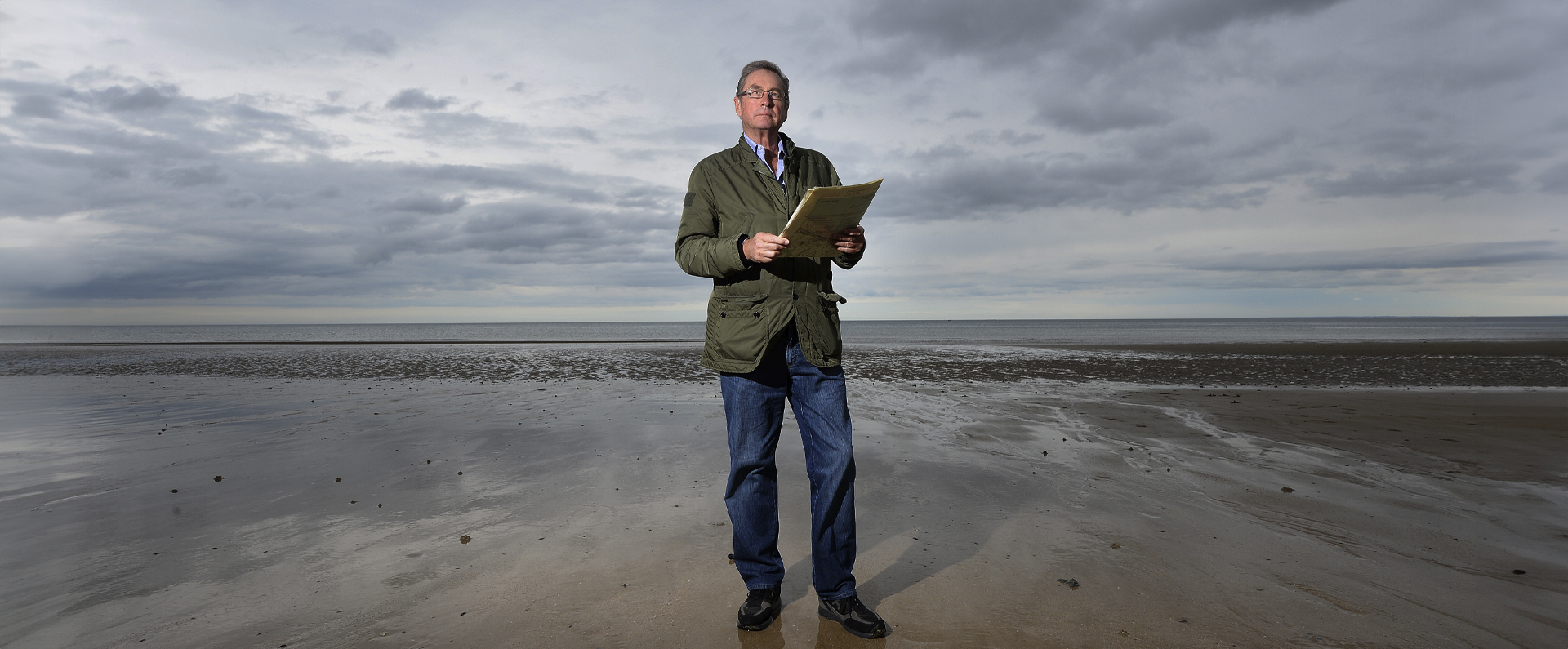
Published in Britain at War in July 2018.
Temporary Second Lieutenant John Scott Youll VC: skill
John Scott Youll was born in the mining village of Thornley, County Durham, on 6 June 1897. He was the younger son of Richard and Margaret Youll and he attended Thornley Council School in Wingate, County Durham. Known throughout his life as “Jack”, he left school at fifteen and became an apprentice electrician at Thornley Colliery.
On reaching military age, he volunteered and became a sapper in the Royal Engineers (Durham Territorials) in July 1915. After training in England, he was sent to France on 11 August 1916 and made such a favourable impression that he was recommended for a commission.
In February 1917, he returned to Britain for officer training and in June of that year he became second lieutenant in the 1st Battalion, Northumberland Fusiliers. Back in France, he was Mentioned in Dispatches for his brave role in fierce fighting at Polygon Wood during September and October 1917.
British forces first arrived on the Italian Front in November 1917, shortly after the Italian forces had been heavily defeated at the Battle of Caporetto. Youll and his battalion were soon transferred to this front. By March 1918, the 7th, 23rd and 48th Divisions were situated in the mountains that lie north of Vicenza in the Asiago sector.
It was while serving in Italy on attachment with the 11th (Service) Battalion, Northumberland Fusiliers, that Youll became the first officer in the Northumberland Fusiliers to be awarded the VC since the Battle of Lucknow – during the Indian Mutiny – more than half a century earlier.
On 15 June 1918, the Austrian 11th Army – encouraged by the effective withdrawal of Russia and Romania from the war – started the Battle of Asiago, or what the British knew as the Third Battle of Piave. The enemy’s artillery attack included gas, shrapnel, high explosive and even armour-piercing shells, fired from every calibre of gun.
The British sector of the front was held by the 23rd Division (New Army), which included the 11th Northumberland Fusiliers. The Austrian infantry assault, of four and a half regiments, was formidable, and by 8 am on 15 June it had broken through the British line. This prompted the 11th Northumberlands to form a defensive flank, while at the same time sending out patrols to gather information that would enable them to keep the Austrians at a distance.
Youll, aged twenty-one, was the leader of one of these patrols, and was awarded his VC for bravery under a fierce barrage. The London Gazette described his courage that day: “Sending his men back to safety, he remained to observe the situation. Unable subsequently to rejoin his company, 2nd Lieutenant Youll reported to a neighbouring unit, and when the enemy attacked he maintained his position with several men of different units until the troops on his left had given way and an enemy machine-gun had opened fire from behind him. He rushed the gun and, having himself killed most of the team, opened fire on the enemy with the captured gun, inflicting heavy casualties. Then, finding that the enemy had gained a footing in a portion of the front line, he organised and carried out with a few men three separate counter-attacks. On each occasion he drove back the enemy, but was unable to maintain his position by reason of reverse fire.
“Throughout the fighting his complete disregard of personal safety and very gallant leading set a magnificent example to all.”
Due to the arrival of Allied reinforcements later in the day, the Austrian offensive was rebuffed, although the 11th Northumberlands suffered casualties amounting to a fifth of its strength.
The news of Youll’s VC (as well as the Italian bravery award of the Al Valore Militare) caused great excitement in Thornley, where a house-to-house collection was made for “Our VC”. He was publicly honoured at the Thornley Hippodrome on his return home on leave on 10 September 1918 and was given many gifts, including a gold watch and chain, and a silver cigarette case
Youll, a slim, modest man with boyish looks, told cheering locals: “There are two kinds of honour – the seen and the unseen.” Shortly after he returned to the Italian Front, a local paper quoted a soldier on leave as saying: “He is one of the lads. And if anybody ever deserved the VC it is 2nd Lieutenant Youll.”
Youll, who was single, received his VC from George V at an investiture at Buckingham Palace on 4 September 1918 but he was soon back in Italy fighting on the frontline.
In October 1918, he was the only officer from his company not to be wounded during an objective to cross the River Piave. On 27 October 1918, during the capture of a second objective, Youll was wounded in the arm crossing the River Piave. Later that day he was killed when a shell hit his trench and his last words to his Adjutant, Lieutenant Cowling, as he lay on a stretcher, were: “It’s all right Cowling, we got them stone cold.”
Tragically, Youll, still only twenty-one, had died just a fortnight before Armistice Day. His parents were notified of his death in a telegram sent on November 10, just a single day before the fighting formally halted.
Youll was initially buried at Lonadina British Cemetery, Spresiano, but he was later reburied at Giavera British Cemetery, also in Italy. There is a memorial to Youll in his home village of Thornley, County Durham.
I purchased his VC medal group at an auction in London in 1997 and I feel immensely privileged to have become the custodian of this courageous man’s gallantry and service awards.
Download a PDF of the original Britain at War article
For more information, visit:
LordAshcroftOnBravery.com


